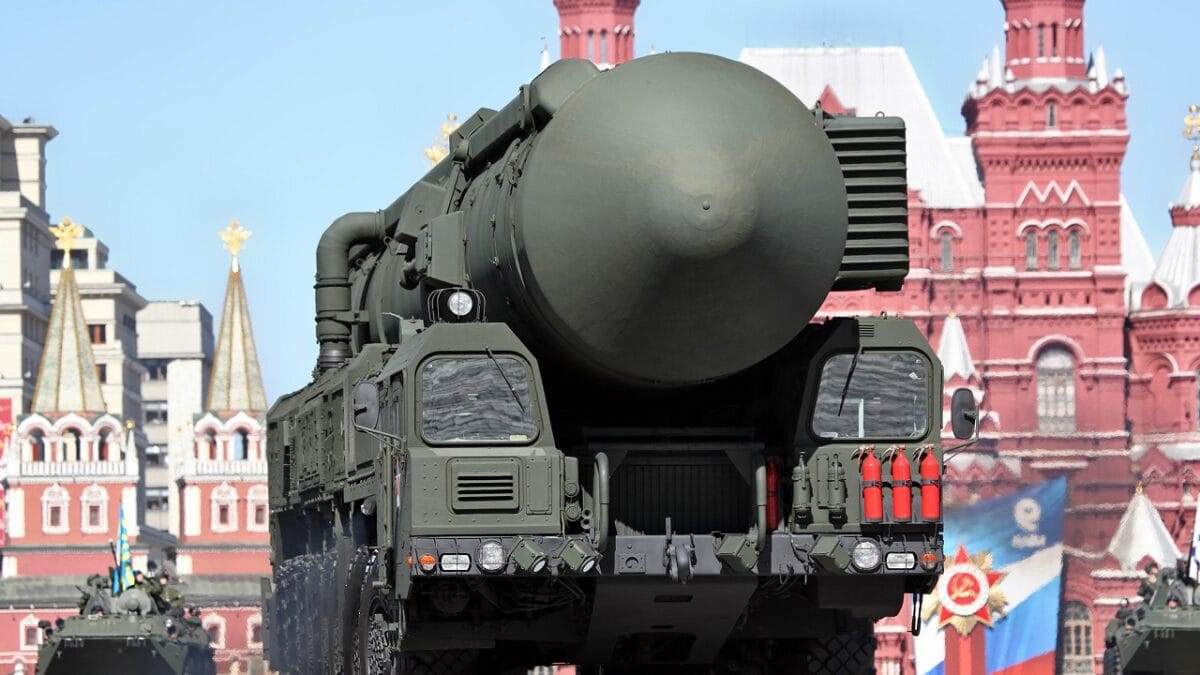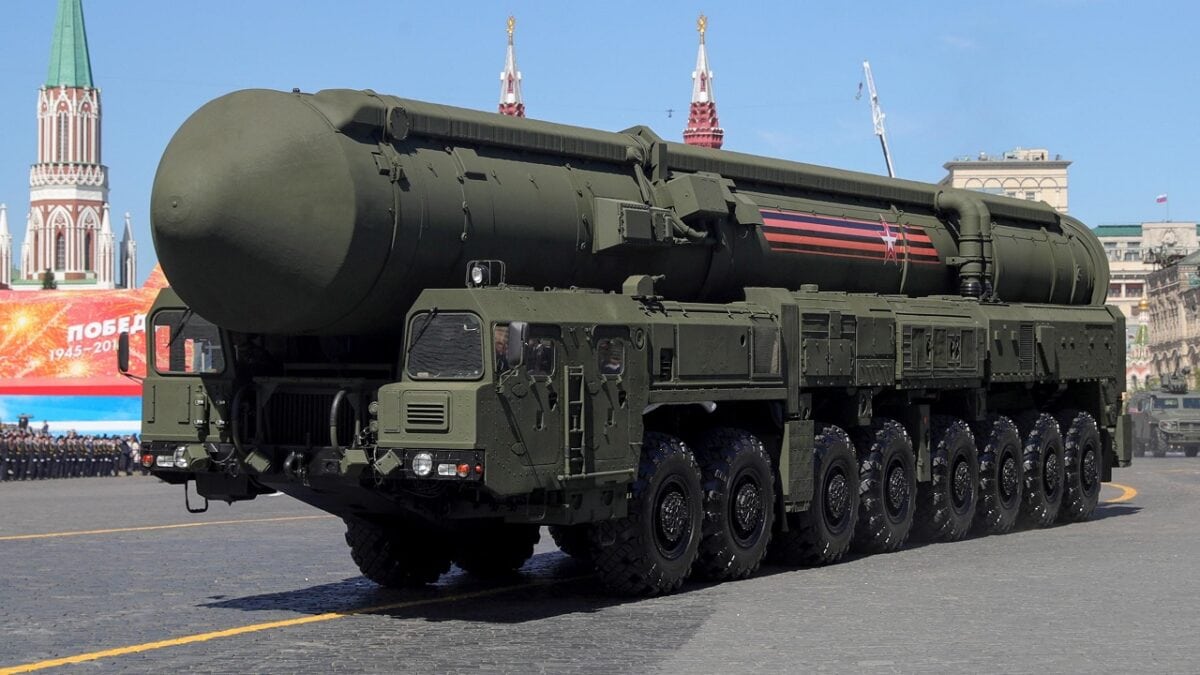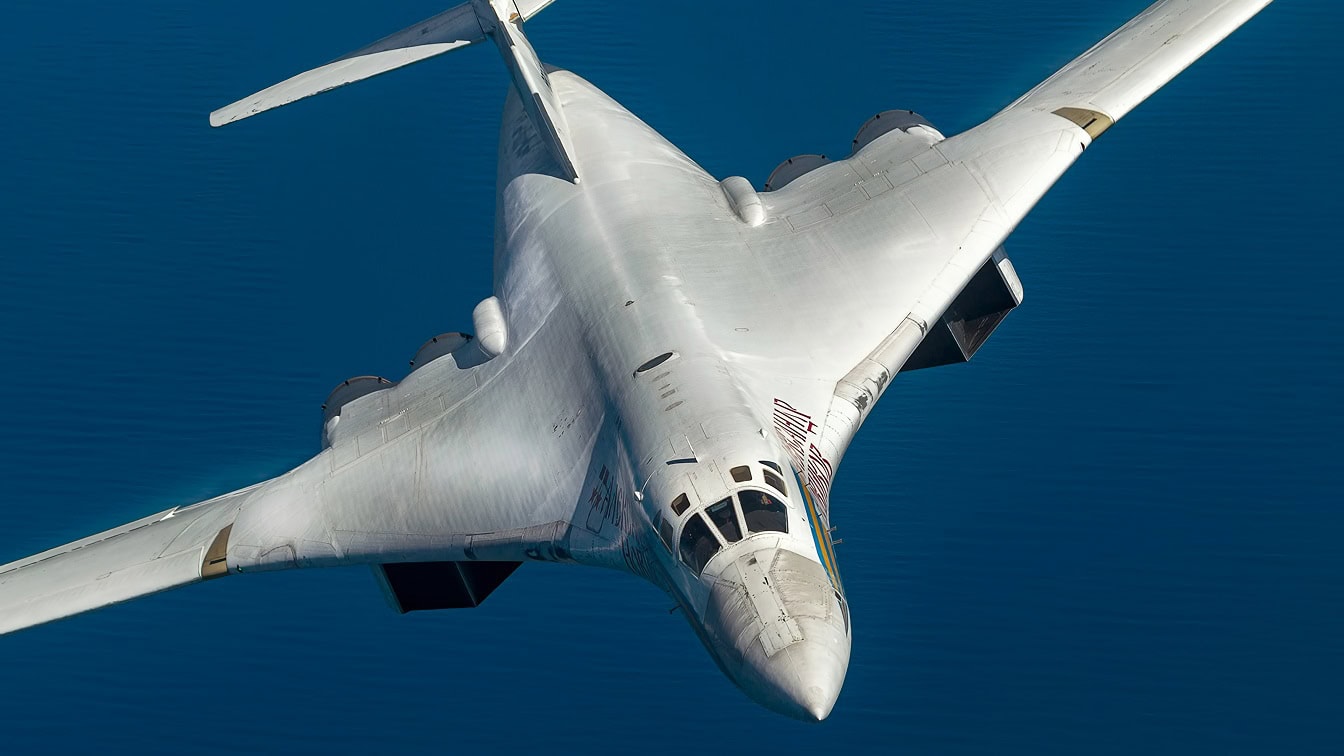Russian President Vladimir Putin’s regime has consistently signaled that the Ukraine War could trigger Moscow’s use of nuclear weapons. After a lull in threats toward the end of last year, possibly due to China exerting its influence over the Kremlin, those threats are on the rise again. At the end of February, former Russian leader Dmitry Medvedev said the world faces a nuclear apocalypse if the West continues to arm Ukraine with advanced weaponry.
Despite the consistency of Russia’s nuclear intimidation, Western politicians and academics dismiss these threats as a bluff. Are they right to do so?
Existential Reinterpretations
In a study for the Heritage Foundation, we argue that Russia’s threat to use nuclear weapons is primarily a tactic meant to scare selected Western audiences, and thus weaken the link between Ukraine and its Western allies. However, we cannot be sure that Russia will not use nuclear weapons. Moreover, Russia has laid out a linguistic framework for their use. Therefore, the safest option to prevent their use is to plan for potential decision points where they might be used, and then work to ensure that they are not.
Russia has an arsenal of up to 2,000 tactical nuclear weapons. There are four circumstances in its latest nuclear doctrine that justify their use: an imminent use of nuclear weapons against Russia; actual nuclear use against Russia; a threat to inhibit Russia’s control of its nuclear weapons; and a threat to the existence of Russia.
None of those conditions apply in the Ukraine war. The Russian state is not in itself threatened. It is the one threatening the survival of a neighbor, Ukraine. Therefore, there is no coherent military justification for the use of nuclear weapons.
However, the Russian leadership is re-interpreting the notion of threat.
For example, at a recent conference, Putin, citing his country’s military doctrine, said that Russia could use weapons of mass destruction “to protect its sovereignty, territorial integrity and to ensure the safety of the Russian people.”
This is an evolution, and conceivably a wide one, from the idea that nuclear weapons could be used if Russia faced an acute existential threat.
Second, Putin and his allies have framed the Ukraine war in existential terms: If NATO “seizes” Ukraine, then Russia itself will be next. NATO’s aim, in the Kremlin’s view, is to break Russia up. Therefore, the loss of Ukraine is an existential threat to Russia, and as we know from Russian doctrine, an existential threat is grounds for the use of nuclear weapons. Russia, so the argument goes, must fight NATO in Ukraine, otherwise it will have to fight NATO in Russia.
More broadly, Russian doctrine is clear: Russia believes that it is in a global struggle with the West, a struggle that encompasses its political culture, language, and territory. The Kremlin believes that the West is fighting proxy wars, not in Africa or Asia as happened in the Cold War, but in Ukraine and other states that neighbor Russia, as well as via the Internet for the hearts and minds of Russian citizens. Russian doctrine presents a Russian state in profound conflict with the West.

Russian Mobile ICBMs. Image Credit: Creative Commons.
So what should the U.S., working with its allies, do?
Well Informed Is Well Prepared
First, they must reassure the public that they are aware of the threat of Russian nuclear weapons. For too long, Western governments have dismissed Russian nuclear threats. Minimizing a real threat means failing to prepare to dissuade Russia.
Second, one of the key lessons learned from the 2011 Fukushima civil nuclear disaster in Japan is that a lack of information — in particular an accurate assessment of radiation levels — can lead to ill-informed decisions. The U.S. and its allies should improve how they detect and monitor radiation in case of nuclear use, a strike on a nuclear facility, or an accident stemming from a nuclear plant located in an area of military operations.
Third, the U.S. government, supported by the governments of the UK and France, the two other recognized democratic nuclear powers in NATO, can employ a series of measures to dissuade Russia from threatening to use, or using, nuclear weapons. They must also work out how to minimize, as far as possible, the catastrophic consequences if Russia deploys such weapons — or uses nuclear power stations as improvised weapons.
The first measure should be to ensure that any use of tactical nuclear weapons by Russia is met by a robust Western and global response that is calibrated, relies on conventional weapons, and is informed by an understanding of Russian behavior and thinking.
Second, make sure that Russia’s potential allies in the developed and developing world inform Moscow of the unacceptability of using nuclear weapons. The critical players in this instance are not the U.S. and UK, but China and India, as well as France and Germany to a lesser extent.
Third, develop and roll out a comprehensive monitoring system to prepare for either military or civilian nuclear release and contamination, whether deliberate or accidental. Work with allies, especially in Eastern Europe and Scandinavia, to review how they detect and monitor radiation levels. This monitoring and detection system should be rolled out across Europe and networked across governments. As the use of nuclear power grows, this system should be expanded to cover the globe. This will primarily help protect civilian populations from civil nuclear accidents, but it could also help in times of war. Related to this, we should maintain key medical stockpiles, such as those of potassium iodide, and supplies of personal protective equipment.
Fourth, keep channels of communication with Moscow open, even if the Kremlin is not responsive.
Collapsing Dreams Can Be Dangerous
Russia would probably prefer to threaten the use of nuclear weapons, but fight conventionally. But Putin and his generals are not necessarily bluffing. Threatening to use nuclear weapons to divide Western populations was a Soviet tactic, and perhaps Moscow is repeating it now. But the West cannot be sure, and official Russian statements and doctrine present the loss of Ukraine, bizarrely or not, as “existential,” which under Russian doctrine allows Russia to use nuclear and chemical weapons.

MAY 9, 2018: An RS-24 Yars mobile intercontinental ballistic missile system rolls down Moscow’s Red Square during a Victory Day military parade marking the 73rd anniversary of the victory over Nazi Germany in the 1941-1945 Great Patriotic War, the Eastern Front of World War II. Sergei Bobylev/TASS.
Putin’s dreams of Ukraine reincorporated into Russia, of breaking up NATO, and of Russia leading a global anti-Western alliance are collapsing about him. Disaster for Russia’s imploding armed forces may well await, and at some point, Ukraine’s armed forces will likely threaten to break Russia’s land corridor linking Crimea to the Donbas.
At that point, Putin will make one of the most fateful decisions of the century: whether to employ nuclear or chemical weapons. The U.S. must act now to minimize that threat and to ensure the protection of the American public and U.S. allies.
Robert Seely, PhD, is Member of Parliament for the Isle of Wight. Colonel Hamish de Bretton-Gordon, formerly commanding officer of the U.K.’s Joint Chemical, Biological, Radiological and Nuclear (CBRN) Regiment and of NATO’s Rapid Reaction CBRN Battalion, is a Fellow at Magdalene College at Cambridge University. Ted R. Bromund, PhD, is Senior Fellow in Anglo-American Relations in the Margaret Thatcher Center for Freedom at The Heritage Foundation.

